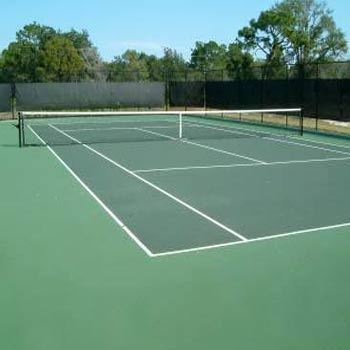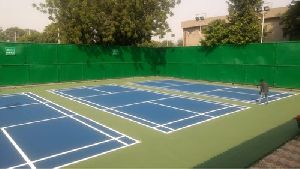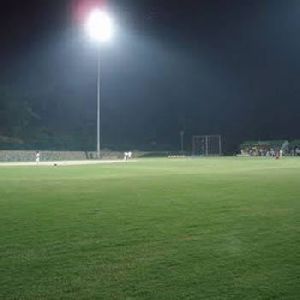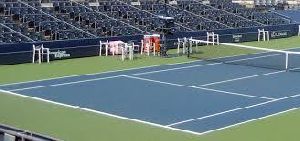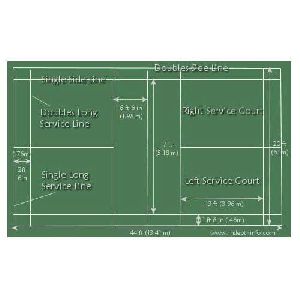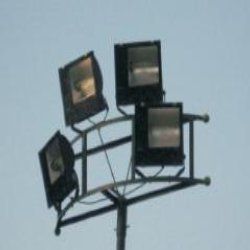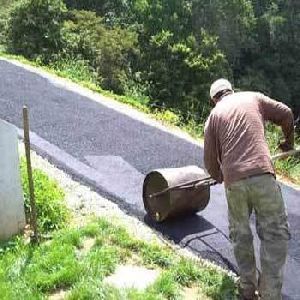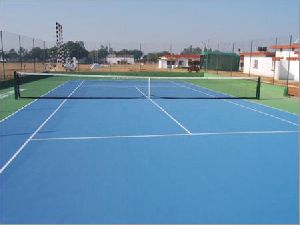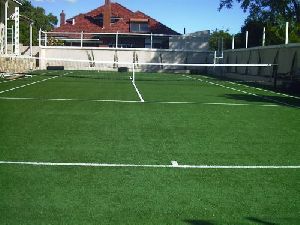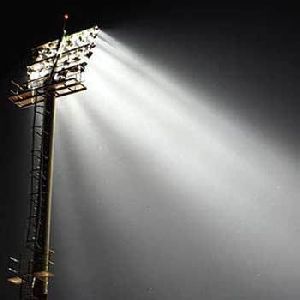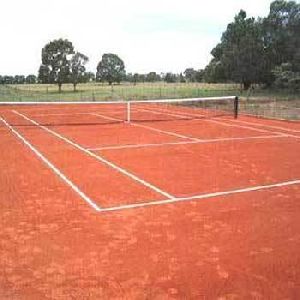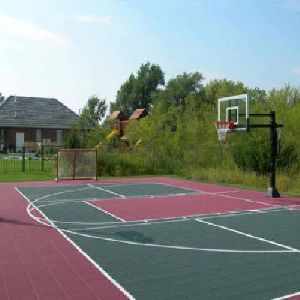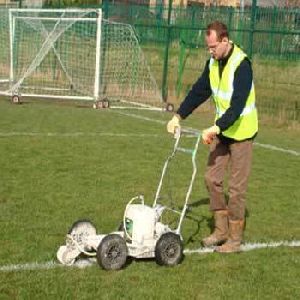- GST No. 07AAFCG4939G1ZH
- Send SMS
- Send Email
We undertake Tennis Court Construction to produce the best New Grass Court, Clay Court, Dehradun Bajiri Court, Synthetic Tennis Court, Tennis Court Side Net, Practice Wall, and Hard Court. The Courts prepared by us are in compliance with the set international standards of size and dimension. We are rated as a reliable Tennis Court Construction Company. The variety of our Court Surfaces is made using the best quality raw materials. We use the finest quality clay which is blended with green stone to give the lifelong surface. For the Synthetic Surface we use the finest synthetic grass fibers which are held in place by backing mat with finely graded sand. Beside, we are a leading name in the Tennis Court Surface Construction.
Tennis Court Construction Basics :
If you are considering a new tennis court, here are some basic requirements to consider.
Size and Space :
- A standard size tennis court for doubles play measures 60' x 120' from fence to fence. For batteries of two or more courts, a minimum of 48' additional width is allowed for each extra court. For example, two courts measure 108' x 120', three courts measure 156' x 120', etc.
- Total cleared space, however varies depending upon site topography, perimeter drainage needs, landscaping and so on. You will need a minimum of 5' around the entire court perimeter. A steeply sloped site requires more clearing to allow for natural sloping around the court. Additional space provisions are needed for special drains, elaborate landscaping or patios.
- Courts can be smaller than these dimensions, but since the playing lines for doubles are always 36' x 78', undersizing compromises safety and quality of play.
Orientation : If possible, a tennis court is situated in a true north-south direction.
Perimeter Sloping & Drainage : A court built into the side of a hill requires different perimeter sloping and drainage than one built on a flat, open area. To divert surface water from washing onto or under a court, a variety of techniques are used, ranging from natural swales, to elaborate underground systems. Sometimes retaining walls are required with drainage provisions behind the walls. This all affects size and space requirements.
Fencing : Lots of options here. A standard fence is 10' high, but 8' or 12' may be appropriate at times. The court can be fully enclosed with a high fence or sides can be left open or enclosed with a lower 3' or 4' fence. Corners can be a traditional 90 degrees or cut off diagonally. Support systems include wood (round cedar or pressure treated pine) or steel posts (galvanized or vinyl-bonded). The fabric can be vinyl-bonded chain link, netting or chicken wire.
Surface Basics :
- All Weather : A hard court surface, usually built with an asphalt base and an acrylic coating to provide color (and optional cushioning). These courts typically play faster and require little ongoing maintenance, but have a limited life span.
- Clay or Fast Dry : Clay is a natural product; fast dry is a crushed and blended green stone. Both play slow, are comfortable underfoot and allow slide, but require daily and seasonal maintenance. Properly cared for, they have an unlimited life span.
- Synthetic Turf : Created by weaving polypropylene synthetic grass fibers into a backing mat and held in place with finely graded sand. This surface is comfortable underfoot, and the level of sand determines the speed of play and foot-slide. Maintenance includes occasional sanding and brooming. Life span will depend on frequency of play; it wears as a carpet does.

